Phenazine methylsulfate
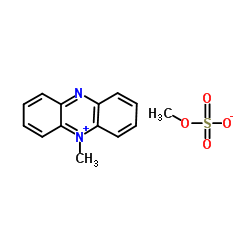
Phenazine methylsulfate structure
|
Common Name | Phenazine methylsulfate | ||
|---|---|---|---|---|
| CAS Number | 299-11-6 | Molecular Weight | 306.337 | |
| Density | N/A | Boiling Point | N/A | |
| Molecular Formula | C14H14N2O4S | Melting Point | 158-160 °C (dec.)(lit.) | |
| MSDS | Chinese USA | Flash Point | N/A | |
Use of Phenazine methylsulfatePhenazine methylsulfate is a free radical generator. Phenazine methylsulfate has been used as an electron transfer reactant in cell viability assays. Phenazine methylsulfate induces ssDNA break formation in the presence of the reducing agent NADPH. Phenazine methylsulfate induces oxidative DNA damage in an alkaline comet assay and apoptosis. |
| Name | 5-methylphenazinium methyl sulfate |
|---|---|
| Synonym | More Synonyms |
| Description | Phenazine methylsulfate is a free radical generator. Phenazine methylsulfate has been used as an electron transfer reactant in cell viability assays. Phenazine methylsulfate induces ssDNA break formation in the presence of the reducing agent NADPH. Phenazine methylsulfate induces oxidative DNA damage in an alkaline comet assay and apoptosis. |
|---|---|
| Related Catalog |
| Melting Point | 158-160 °C (dec.)(lit.) |
|---|---|
| Molecular Formula | C14H14N2O4S |
| Molecular Weight | 306.337 |
| Exact Mass | 306.067413 |
| PSA | 91.58000 |
| LogP | 2.38630 |
| Storage condition | 2-8°C |
| Stability | Stable. Incompatible with strong oxidizing agents. |
| Water Solubility | soluble |
CHEMICAL IDENTIFICATION
HEALTH HAZARD DATAACUTE TOXICITY DATA
MUTATION DATA
|
| Personal Protective Equipment | dust mask type N95 (US);Eyeshields;Gloves |
|---|---|
| Hazard Codes | Xn:Harmful; |
| Risk Phrases | R36/37/38;R68 |
| Safety Phrases | S26-S36/37/39 |
| RIDADR | 2811 |
| WGK Germany | 3 |
| RTECS | SG1645000 |
| HS Code | 2933990090 |
| Precursor 8 | |
|---|---|
| DownStream 3 | |
| HS Code | 2933990090 |
|---|---|
| Summary | 2933990090. heterocyclic compounds with nitrogen hetero-atom(s) only. VAT:17.0%. Tax rebate rate:13.0%. . MFN tariff:6.5%. General tariff:20.0% |
|
Season-dependent effects of elevated temperature on stress biomarkers, energy metabolism and gamete development in mussels.
Mar. Environ. Res. 103 , 1-10, (2014) In coastal areas, sessile species can be severely affected by thermal stress associated to climate change. Presently, the effect of elevated temperature on metabolic, cellular and tissue-level respons... |
|
|
Omega-3 fatty acids, EPA and DHA induce apoptosis and enhance drug sensitivity in multiple myeloma cells but not in normal peripheral mononuclear cells.
J. Nutr. Biochem. 25(12) , 1254-62, (2014) The n-3 polyunsaturated fatty acids eicosapentaenoic acid (EPA) and docosahexaenoic acid (DHA) have been shown to enhance the effect of chemotherapeutic drugs in clinical studies in cancer patients an... |
|
|
Cell-penetrating antimicrobial peptides - prospectives for targeting intracellular infections.
Pharm. Res. 32(5) , 1546-56, (2015) To investigate the suitability of three antimicrobial peptides (AMPs) as cell-penetrating antimicrobial peptides.Cellular uptake of three AMPs (PK-12-KKP, SA-3 and TPk) and a cell-penetrating peptide ... |
| EINECS 206-072-1 |
| 5-methylphenylazinium methyl sulfate |
| PHENAZINE METHOLSULPHATE |
| Phenazine Methyl Sulfate |
| N-methyl phenazinium methylsulphate |
| Phenazine Methoshlphate |
| PMS,phenazine methosulfate |
| Phenazinium, 5-methyl-, methyl sulfate |
| 5-methylphenazinium methylsulfate |
| 5-Methylphenazinium methosulfate |
| PHENAZINE METHOSULFATE |
| 5-Methylphenazin-5-ium methyl sulfate |
| PMS |
| MFCD00011923 |
| PhenazineMethosulphate~ |
| Phenazine methosulfa |
| 5-Methyl-phenazinium |
| N-methylphenazinium methyl sulfate |
 CAS#:92-82-0
CAS#:92-82-0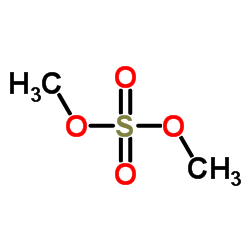 CAS#:77-78-1
CAS#:77-78-1 CAS#:20057-16-3
CAS#:20057-16-3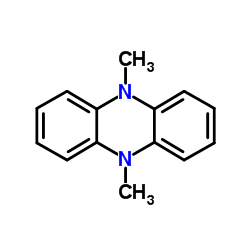 CAS#:15546-75-5
CAS#:15546-75-5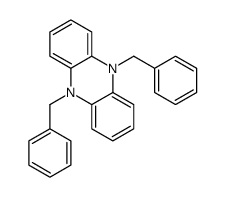 CAS#:62248-06-0
CAS#:62248-06-0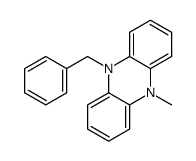 CAS#:125106-04-9
CAS#:125106-04-9 CAS#:119-75-5
CAS#:119-75-5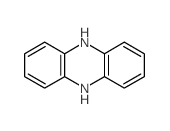 CAS#:613-32-1
CAS#:613-32-1 CAS#:85-66-5
CAS#:85-66-5 CAS#:528-71-2
CAS#:528-71-2
